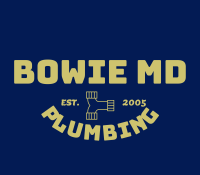24March 2022
Installing a bathtub isn’t exactly rocket science, but it does require solid plumbing skills. Replacing an old bathtub with a new one is also a moderately difficult project. If the old tub is readily accessible, the project can move speedily; if you have to open a wall to remove the old tub and position the new bathtub in its place, the project will take significantly more time.
As always, safety is paramount when working with water and plumbing. Make sure you have a helper on hand in case of an emergency, and be sure to turn off the water supply to the bathtub before starting any work.
Materials Needed For Installing a Bathtub
In order to install a bathtub, you will need the following materials:
- Bath Tub
- Phillips head screwdriver
- – Flathead screwdriver
- – Chisel
- – Pry bar
- – Level
- – Tape measure
- – Hammer
- – Nail gun or hammer and nails
- – Caulking gun
- – Tub caulk
- – Silicone caulk
- – Faucet
- – Spout
- – Shower head
- – Bathtub
- – Stud finder (optional)
- – Drill and drill bit (optional)
Preparing for the Bathtub Installation
Firstly, the supporting frame supplied with the bath should be fitted (if required) according to the manufacturer’s instructions. If you are not comfortable doing this, get a bowie md professional plumber in your local area to do it for you.
The next step is to remove the old bathtub. This can be a difficult process, especially if the old tub is glued in place. If the old tub is accessible, use a Phillips head screwdriver to remove the screws that hold it in place. Once the screws are removed, use a pry bar to carefully remove the tub. If the old tub is not easily accessible, you may need to open up a wall to remove it.
Once the old tub is out, you can start preparing for the new one. Use a tape measure to determine the size of the new bathtub and then use a level to make sure it will be installed level. If it is not, you may need to shim the tub until it is level.
If your new bathtub is not exactly the same size as the old one, you will need to cut away the surrounding tile and/or drywall to make room for it. Use a chisel and/or a flathead screwdriver to do this. Be very careful when doing this, as you do not want to damage the underlying studs or plumbing.
Once the new tub is in place, use a caulking gun to apply a layer of tub caulk around the edge of the bathtub. Do not skip this step.
Removing Old Tap
If you’re replacing old taps with new ones as part of your installation, the first thing you should do is shut off the water supply to the taps. Next, use a wrench to unscrew the nut that holds the tap in place. If the nut is too tight or if it’s rusted, you may need to use a hammer to lightly tap the wrench until it loosens.
Once the nut is removed, pull the tap out of the wall. You may need to use a screwdriver to remove the aerator from the end of the tap. If so, be sure to clean it thoroughly before reattaching it.
Thread the new tap into the wall in the same place as the old one and tighten the nut with a wrench. Be careful not to over-tighten it or you may damage the tap. Finally, turn on the water supply and check for leaks.
Installing New Bathtub
The first step in installing a bathtub is to remove the old one. If it’s a tight fit, you may need to use a pry bar or chisel to break the seal of the caulk around the edge of the tub. Once the tub is free, disconnect any plumbing attached to it and set it aside.
If your new bathtub is smaller than the old one, you may need to adjust the position of the studs in your walls to accommodate it. Once the new tub is in place, use a level to make sure it’s level before attaching it to the wall. Use screws and/or nails to secure it in place.
Next, attach any plumbing fixtures to the tub. This includes the faucet, the spout, and the shower head. Be sure to follow the manufacturer’s instructions for installation.
Tiling Around the Bathtub
In the area where the bath meets the tile, it is necessary to seal the joins with a silicone rubber caulking. This is important as the fitting can move enough to crack a rigid seal, causing the water to penetrate the wall between the bath and the tiling, leading to complications with dampness and possible leaks to the ceiling below.
Final Steps
Finally, reattach any plumbing that was disconnected from the old tub. Turn on the water supply and check for leaks. If everything is in order, you’re ready to take a bath!
Alternatively, ceramic coving or quadrant tiles can be used to edge the bath or shower tray. Plastic strips of coving, which are easy to use and cut to size, are also easily available on the market. It is advisable to fit the tiles using water-resistant or waterproof adhesive and grout.
Installing a new bathtub is a relatively easy project that most homeowners can do with a little help from some plumbing basics. By taking the time to do it right, you can enjoy your new tub for many years to come.
